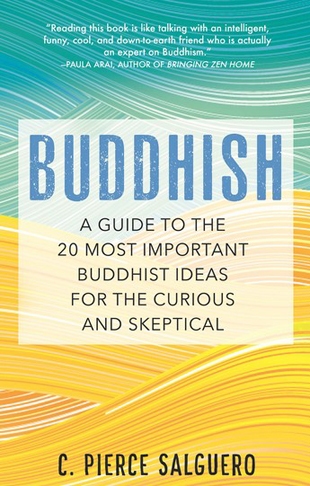The intended audience for this thoughtful introductory guide to Buddhism are the millions of people who practice mindfulness or meditation in their various forms. We often learn mindfulness — or learn “about” mindfulness — from articles online, memes, or the explanations of a friend, without discovering how it, and other ways of expressing our spirituality, are rooted in Buddhism.
Even more important to author Salguero is that when people do decide to explore Buddhism, they receive a clear, accessible presentation. Salguero accomplishes that very well. “This book presents a balanced introduction to twenty of the central principles of Buddhism, as I understand them and as I have experienced them,” he writes in the introduction.
Some chapters address subjects that one with a cursory knowledge of Buddhism will recognize as Buddhist: Awakening (ch. 1), Karma (ch. 4), Buddha (ch. 7), and Zen (ch. 16).
Other chapters take on subjects that are just as Buddhist but less popular with readers and would-be Buddhists: Renunciation (ch. 5), Rituals (ch. 14), Doubt (ch. 20).
Our favorite chapter was 11: Skillful Means. This is where Buddhist philosophy falls away and Buddhist practice plants a human being’s feet firmly on the ground. Salguero, a scholar and professor of Buddhism, explains the classic texts well. But he also opens up the spiritual practices in understandable, applicable ways.
A summary of these “Skillful Means” is the ten practices or “virtues” that the classic texts teach every person, religious or secular, should cultivate: generosity, morality, renunciation, wisdom, diligence, patience, honesty, determination, loving kindness, and equanimity. Salguero explains each. He summarizes: “These ten ‘perfections’ … are said to be the qualities that are exhibited by Awakened beings, and they are also virtues that you must perfect before it’s possible for you to become Awakened.”
With such teachings and practices, Buddhism has a lot to offer someone who knows only simple forms of mindfulness and meditation. The religious tradition is worthy of your exploration, and so is this volume.
Also to the author’s credit, the many schools, languages, and denominations of Buddhism are explained adeptly. He does not gloss them over as if all Buddhists were the same.
